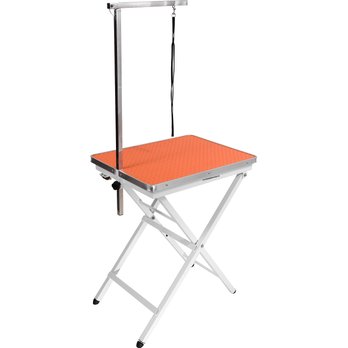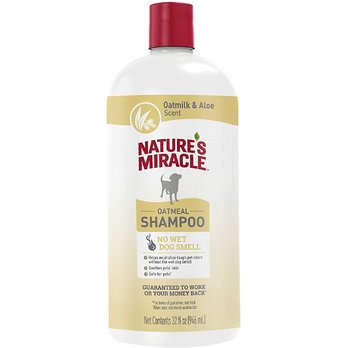
Dog Grooming
How to groom a dog at home
Dog shedding management
Dog dental care
Dog bathing
Grooming a dog at home. How to trim dog nails
How to groom a dog at home
Different dog breeds have different grooming needs. Usually the shorter the dog's coat, the easier the grooming. Dogs with short double coat can produce a massive amount of shedding and in that case brushing the dog regularly is a good strategy for managing the heavy shedding. Pugs and Beagles, for example, have a short coat that requires daily brushing to decrease the amount of dog hair around the home and on the furniture where the dog spends time. Owners of dogs that shed a significant amount may find that using a good vacuum cleaner frequently helps to keep the house clean from the dog's hair. Some vacuum cleaners are specifically designed for pet owners and make the clean up easier.
Pet owners who own a dog breed that requires maximum maintenance and a lot of grooming often choose to do the dog grooming at home rather than taking the dog to a professional groomer. With a help of dog grooming video tutorials and some practice grooming at home can become a pleasant ritual for both the dog and the owner. There is an initial investment into dog grooming tools. Taking a dog to a groomer can be expensive and getting some basic grooming tools can quickly help you to start saving money on dog grooming.
To successfully groom a dog at home you will need to get a grooming table, dog grooming clippers, scissors, some brushes as well as canine shampoo and conditioner. The selection of tools will depend on the dog breed that you have. Dogs with short hair, for example, don't need their coat trimmed, while dogs with medium to long coat may require coat trims every four to six weeks.
Dog grooming by breed
How to groom an Australian Shepherd
How to groom a Maltese
How to groom a Malese Poodle Mix dog?
How to groom a Poodle
Goldador shedding
Trimming a Goldendoodle's face at home
Pug shedding
How to groom a dog with matted hair
Some dog breeds require frequent grooming sessons that keep the dog's skin and coat healthy. Unfortunately not all people realize that getting a dog breed such as shih tzu, maltese, bichon frise or poodle or some other high maintenance breeds will require regular grooming. A neglected continuously growing coat will eventually mat causing pain and discomfort to the dog. Please take good care of your pet and learn about the grooming needs of the dog breed that you are planning to get.
Regular brushing and trimming a dog's coat once a month helps to keep the coat healthy and the dog happy.

How to manage dog shedding
Most dog breeds do shed and some shed a lot! There is no way to stop the shedding, but with the right tools you can control the shedding. With the right dog care products it is possible to manage the heavy shedding, gently remove tangles and prevent hot spots on the dog's skin.
There are so many different dog brushes and de-shedding tools on the market. Even though all of these de-matting and de-shedding tools and brushes will help you to control the dog's shedding, some of the brushes are a lot more effective than others.
Dog grooming. How to brush a dog's teeth
Grooming a dog at home includes brushing teeth. Brush your pet's teeth daily. Just like humans, dogs need to have proper dental care tools including a toothbrush and canine toothpaste that you can buy in a pet store. Do not use a toothpaste meant for humans as these may be harmful for your dog and can cause upset stomach. Dog's can't spit out the toothpaste and end up swallowing it. That is the reason why canine toothpastes are made so that it is safe for your pet to swallow if any toothpaste is left on the dog's teeth after brushing. Using a soft children's toothbrush or a dog toothbrush is fine. By providing the dog with correct dental care you can help eliminate food particles that accumulate between your dog's teeth and over time may turn into tartar. If tartar isn't removed then it may eventually inflame dog's gums turning into periodontal disease, causing pain and loss of teeth.
Dog teeth cleaning
The best time to start getting your dog accustomed to having its teeth brushed is while the dog is still a puppy. It is never too late to start brushing your dog's teeth. Any dog can be taught to have its teeth brushed. Get a toothbrush and a toothpaste from a pet store. Using human toothpaste is not a good idea as it may cause upset stomach for a dog.
Do not try to overpower or punish your dog for resisting brushing his teeth. This approach will only result in negative association with getting his teeth brushed and will cause defensive aggression. Instead, slowly and gently accustom your dog to teeth cleaning. One of the mistakes that owners make is going too fast with the process. Before the dog is ready for the procedure of having the teeth brushed you need to take the time and get the dog comfortable with having its face touched, then once the dog is comfortable, you can start touching and slowly rubbing the dog's teeth with your fingers first. When the dog is comfortable with having his teeth rubbed by your fingers you can add a little of dog toothpaste on your fingers (no toothbrush yet) and rub the toothpaste on your dog's teeth with your fingers. Only when the dog is comfortable you can proceed to using the toothbrush with a toothpaste. A finger brush will work even better for starters. This process may take a week or much longer before you can actually get to the point where the dog is used to having the teeth brushed. Be patient and do not rush this process for best results. Get the dog accustomed to having his mouth handled by letting your dog lick something that he enjoys eating off your fingers and as he does, gently rub your fingers on the sides of his teeth. At the same time you can say a word that indicates that you are going to use for brushing the dog's teeth. Any word will work as long as you are using the same word every time you are brushing your dog's teeth. Be patient with your dog. Getting your dog used to having his teeth cleaned may take a few weeks. Keep the dog teeth cleaning sessions short especially at the beginning. Let the dog chew on specially designed toys for cleaning teeth and provide your dog with rawhide treats. This helps your dog to keep the teeth clean and healthy. See the veterinarian if you notice that your dog has a bad breath, yellow crust along teeth or bleeding gums.
Dog grooming. How to bathe a dog
 For most dog breeds, bathing once every two months should be enough. Bathing your pet more frequently may result in skin irritation and flaking. After you are done bathing your dog, avoid rubbing your dog vigorously with the towel. That can jam hairs under the skin like little splinters and cause very painful skin infections. It's especially a problem for short-coated dogs. Check with your veterinarian to determine the best bathing schedule for your individual dog. For most dog breeds, bathing once every two months should be enough. Bathing your pet more frequently may result in skin irritation and flaking. After you are done bathing your dog, avoid rubbing your dog vigorously with the towel. That can jam hairs under the skin like little splinters and cause very painful skin infections. It's especially a problem for short-coated dogs. Check with your veterinarian to determine the best bathing schedule for your individual dog.
How to bathe a dog
Taking your dog for a long walk helps to reduce stress and anxiety that some dogs may associate with taking a bath. Prior to bringing your dog to a bathtub, make sure that you have dog shampoo, and towels nearby. You don't want to have your wet dog jumping out from a bathtub while you're searching for his shampoo or towel. Avoid getting the shampoo around the dog's face area to prevent eye irritation. Use a washcloth and warm water to wash the face area during bathing. Using a dog tear removal solution around your pet's eyes can help to remove the stubborn reddish tear stains from the dog's face. Having a bath mat helps your dog to feel more stable in the soapy water. Put some towels on the floor around bathtub as your dog will inevitably shake the water off as soon as he gets out from a bathtub. Water temperature should be lukewarm. Make sure to check water's temperature before putting the dog in the bathtub. Remember to towel-dry your dog immediately after a bath. Use caution with blow dryer and make sure that it doesn't get too hot as your dog may easily get burned by it. Let your dog get completely dry before taking him outside especially during the cold months.

Dog grooming tips. How to clip dog nails
Trimming your dog's nails regularly is an important part of grooming. It may be painful for your dog to walk when the nails grow out. Very long nails are prone to breaking. Long nails may also make your dog's toes prone to twisting. The long nails on your dog may injure you by accident. How do you know when it's time to trim your dog's nails? A hard surface test can help you to determine if it is time to trim your pet's nails. If you can hear your dog's nails making a noise as the dog is walking on a hard wood floor, this is your indicator that it is time to trim the dog's nails.
Clip dog's nails
Grooming a dog includes taking care of your pet's toe nails. Start trimming your dog's nails while it's still a young puppy so that the dog is comfortable with this procedure down the road. You can train an older dog also and it will usually take more time and patience to get your dog comfortable with having the nails trimmed. Have an assistant who can help to hold the dog as you are trimming the nails. If you have a smaller dog breed, put the dog on the table so that it is easier for you to trim the nails and the dog is less likely to get away during the process. Stay calm and positive during the process and have a few treats available to reward a good behavior. Your goal is to have the dog relaxed and comfortable during the procedure and your energy needs to be calm and relaxed to be successful.
Speak calmly, and reward your dog with praise and/or a treat when he lets you clip the nails. Be patient with the dog. Getting the dog used to having nails trimmed may take a few months.
|